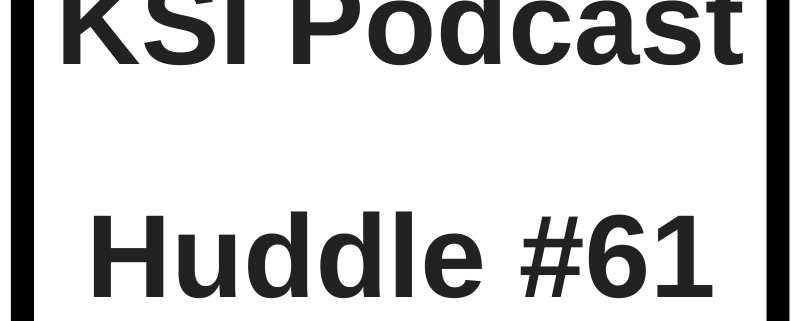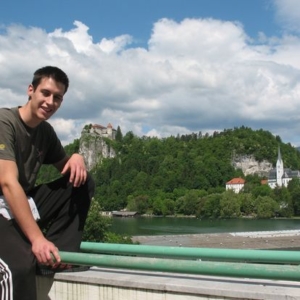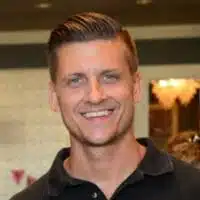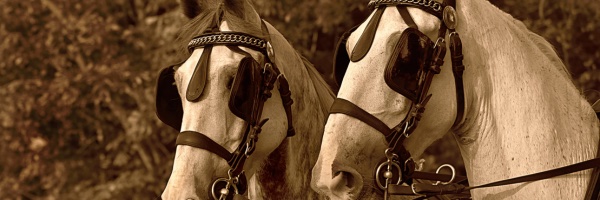Principles – The North Star of Physical Preparation
The enduring power and importance of training principles
Before maps and compasses, humans would look for guidance when travelling, typically seeking them from stars that were consistent in their visibility. Even in the more modern times, these same stars provide an enduring back-up system to travellers.
One can liken training to travelling. The purpose of training is to take our athletic and or physical qualities from Point A- where we are today – to Point B – where we want to be in the future.
In this physical training journey, decisions are made moment by moment. This is the reality of what earlier European literature referred to as the ‘training process’. Ideally you begin with a plan, but the realities of the body combined with the environment require constant adaptation.
In making these constant and in the moment decisions we again ideally have something to guide us, in the same way stars were used for navigation before the advent of compasses and maps.
From my earliest professional development, I was influenced to believe that training principles would be used to serve this purpose.
What are training principles?
I describe training principles as:
Principles of training are general rules or guidelines that can apply to all aspects of training. It is important for a student of physical preparation know these principles, to understand them, and most importantly, to consistently apply them in the training of the athlete.[1] [2]
For me ‘principles of training’ fall within ‘the theory of training’, and I appreciate not everyone wants to embrace theory. However, I strongly suggest that for the safety of the athlete/client, and for the optimization of retaining, that all physical preparation coaches embrace and internalize the principles of training. For this reason principles of training feature prominently in our coach education since it’s commencement in 1999.
What are examples of principles of training?
The following lists describes dominant principles of training as they were presented from 1999 in our coach education courses and books. They are listed alphabetically, not in any order of importance: [3] [4]
- Active and conscientious participation.
- Contrarian principle.
- General to specific.
- Individualization.
- Opposite and equal effect.
- Progressive Overload.
- Recovery.
- Reversibility.
- Specificity.
- Transfer.
- Variety.
Do principles change over time?
The upside of learning and internalizing the principles of training is that, unlike trends in training, they do not change.
In fact, it is a tenant of what I seek to learn, master, and teach – the concept of generalized principles. Concepts that remain unwavering over time, despite many other things changing around it. I credit the US thinker and inventor Buckminster-Fuller for the term ‘generalized principles’ – things that never change – and mastering and teaching these are far more important than ‘science’ or ‘trends’.
I am proud to have contributed to the area of principles of training, an area I have so much respect for, with a number of original principles. I look forward to them standing the test of time…[5]
The world, society and the training environment is subject to continual change. There is the risk that some may assume that newer ways of doing things, such as the arrival of new trends of training, may over-ride or negate the role and importance of training principles. I suggest this is not the case.
It would appear I am not alone in stressing that changing times do not mean principles wane or change. In his augural address, the 54th President of the United States said:
“As my high school teacher, Miss Julia Coleman, used to say: “We must adjust to changing times and still hold to unchanging principles.” [6]
What happens when we ignore these principles of training?
When we ignore the principles of training there are levels of risk that may result. I list them below:
- Overtraining
- Imbalanced adaptations leading to acute or chronic injury
- The shortening of the career, the quality of life, or of life itself.
1. Overtraining
Overtraining can occur very easily and subtlety, with the chances are the moment that it occurred and the decisions make that caused it going unnoticed and unrecognized. It takes a commitment to objective review and high standards of excellence in outcomes to provide a measure of analysis and comparison. In other words, most of these moments in training are missed and lessons are not learnt. This is particularly applicable when the implications of that overtraining are not immediately and blatantly apparent.
Overtraining can lead to sub-optimal training and competition results, onset of injury, reduction of career span and quality of lifelong term.
2. Imbalanced adaptations leading in the acute and/or chronic injury
As with overtraining, any inherent imbalance in training stimulus – in all macro and micro variables – can be subtle, delayed in their appearance, yet significant on the downside. And again, due to the subtle nature of these negative adaptation, and the lack of clarity around what is an optimal adaptation, the moments that these occur are typically missed, and the lessons fall to be received.
Case Study #1 – Acute or/or chronic Injuries
The following refers to an Australian NRL teams first season under a new coach:
The Titans came into their 2024 campaign with high expectation — and at one stage they were even exceeding it — but the season ended with a whimper after injuries decimated Des Hasler’s squad.
Tino Fa’asuamaleaui was the first to go down with an ACL rupture ending his season in Round 3, while Jayden Campbell had a delayed start due to a knee injury before copping two more setbacks in another knee concern and a hand injury.
AJ Brimson battled with a niggling groin injury which eventually caused his season’s end prematurely, while Beau Fermor, Phillip Sami and David Fifita also had stints on the sideline.[7]
3. The shortening of the career, the quality of life, or of life itself.
These subtle failings in training that it appears everyone is not held accountable for, can and most likely will result in significant life-changing implications. These range from shorter careers, through to shortened quality of life post-career, through to premature (or in some instances immediate) death.
Case study #2 – Career ending injury.
Here is a case study that highlights this risk.
“We went on a run, weren’t allowed any water and told ‘if you don’t like it, you can take your car keys to the field and go home’.
“Coaches and trainers do this regularly – try to see how tough you are.
“We had a run, then a short break, then got sent on another run… again without water, then a third run.
“I guess my mind was stronger than my body. I don’t remember what happened – I collapsed and woke up in hospital with around seven doctors and nurses around me… I thought I was going to die.
“I couldn’t move my arms or legs … I’ve never been more scared.
“I was literally on my death bed … and it was 100 per cent avoidable.
“A nurse later told me that 60 per cent of people who get heat stroke die … I was one of the lucky ones.”
Perrett was just 23 at the time but his career was over. “I stayed at Manly but was never the same,” he said.[8]
Perret is now taking legal action against the club.[9]
Case study #3 – Life ending injury.
In November 2020, during the first training session back in the general preparatory phase at the NFL franchise Manly Warringah Sea Eagles, a 20 year old rugby league player passed away as a result of the training session.
Keith Titmuss lost consciousness immediately after a 139-minute training session at the team’s headquarters on Sydney’s northern beaches on November 23, 2020.
A coronial inquest into his sudden death heard several experts concluded the forward was suffering from exertional heat stroke when he had a seizure at an indoor facility. [10]
On the face of it one might consider the athlete may have had a pre-existing condition that led to his passing. However, evidence presented at the subsequent coronial inquiry may provide a different perspective. On 4 November 2019 the club doctor Luke Inman sent an email to the then head of sports science at the club warning about heat and the need for head monitoring at training:
“You are leaving yourself open to litigation from a player if they suffer heat stress or at worst, dies,” the email warned.[11]
This email was followed up the 7th April 2019 with the same warning, this time to more stakeholders within the club:
On 7 April 2019, Dr Inman forwarded a copy of his 4 November 2018 email to Mr Booth, copying in Mr Bonasera, Mr Hasler and Mr Singe, and relevantly wrote: Hi Mark, I am well aware of the NRL policy and guidelines. Furthermore, John Bonasera forwarded you my email in Nov 2018 regarding heat measurement at training and the clubs stand on the “recommendation” is that it is performed at every training session during the hotter months in preseason (see below). You were made aware of the clubs medical policy for heat measurement at training by John Bonasera and have not complied. You are leaving yourself and the club open to litigation from a player if they happen to suffer from heat stress or worse, die. We have already had one extreme example of this. I would strongly advise that this measurement is continued at training please. It does not take long to set up.
The counsel assisting the coroner Adam Casselden SC said the evidence before the coroner showed the training session had been “objectively tough”:
“It was unnecessarily and inappropriately tough, given it was the first extended training session of the new season,” he told the NSW State Coroners Court.
“With the benefit of hindsight, (it was) an inappropriately high level of intensity and not of a safe level or environment.” [12]
The coroner concluded:
“… the training session was “more likely than not inappropriate”, given a range of factors including the hot and humid conditions during the indoor part of the session.[13]
You can read the transcript from the coroners inquest here. [14]
Conclusion
The coronial magistrate inquiry into the tragic passing of Keith Titmuss provided a number of recommendations including:
* Mandating a 14-day period of controlled training load acclimatisation following an off-season or extended break for players.
* It should also consider screening and classifying players for EHS risks, the mandatory reporting of every EHS incident and identifying what cooling strategies should be implemented for outdoor and indoor training sessions, he said.
* Magistrate Lee also recommended Manly make improvements to its record-keeping policies.[15]
It’s unfortunate to see the profession of physical preparation acting in a way that requires the oversight of the judicial system. Does our profession really need a Magistrate to remind them of the fundamentals of the theory of training, including the principles of training? Simple concepts such as progressive overload and individualization?
From my perspective the risks involved when one ignores the principles of training can be serious. The case studies shared, and those that were not, are all for the most part avoidable. They do not need to happen.
It is important for a student of physical preparation know these principles, to understand them, and most importantly, to consistently apply them in the training of the athlete.[16] [17]
Our thoughts are with these athletes and their families.
References
[1] King, I., 1999, Foundations of Physical Preparation (Course)
[2] King, I., 2000, Foundations of Physical Preparation (Book), p. 26
[3] King, I., 1999, Foundations of Physical Preparation (Course)
[4] King, I., 2000, Foundations of Physical Preparation (Book), p. 26
[5] King, I., 2011, Legacy (Course), Unit 5 – Principles of Training, p. 2
[6] Inaugural Address of Jimmy Carter, Thursday 20 Jan 1977, https://avalon.law.yale.edu/20th_century/carter.asp
[7] https://www.foxsports.com.au/nrl/nrl-premiership/nrl-2024-gold-coast-titans-season-review-ins-and-outs-transfer-targets-des-hasler-challenge/news-story/e1b658203153a70f60ef2deb13675fd0
[8] https://www.nine.com.au/sport/nrl/news-2024-the-mole-exclusive-lloyd-perrett-legal-action-manly-sea-eagles-keith-titmuss-20240501-p5jb0s.html
[9] https://www.nine.com.au/sport/nrl/news-2024-the-mole-exclusive-lloyd-perrett-legal-action-manly-sea-eagles-keith-titmuss-20240501-p5jb0s.html
[10] https://www.foxsports.com.au/nrl/nrl-premiership/teams/sea-eagles/inappropriately-tough-session-before-rising-manly-stars-death/news-story/6f20fa3b30ed01621a271fa4a49086db
[11] https://www.abc.net.au/news/2024-02-09/nsw-ex-manly-coach-des-hasler-evidence-keith-titmuss-inquest/103448148
[12] https://www.foxsports.com.au/nrl/nrl-premiership/teams/sea-eagles/inappropriately-tough-session-before-rising-manly-stars-death/news-story/6f20fa3b30ed01621a271fa4a49086db
[13] https://www.abc.net.au/news/2024-05-03/keith-titmuss-inquest-findings-inappropriate-training-session/103800424
[14] https://coroners.nsw.gov.au/documents/findings/2024/Inquest_into_the_death_of_Keith_Titmuss.pdf
[15] https://www.abc.net.au/news/2024-05-03/keith-titmuss-inquest-findings-inappropriate-training-session/103800424
[16] King, I., 1999, Foundations of Physical Preparation (Course)
[17] King, I., 2000, Foundations of Physical Preparation (Book), p. 26







